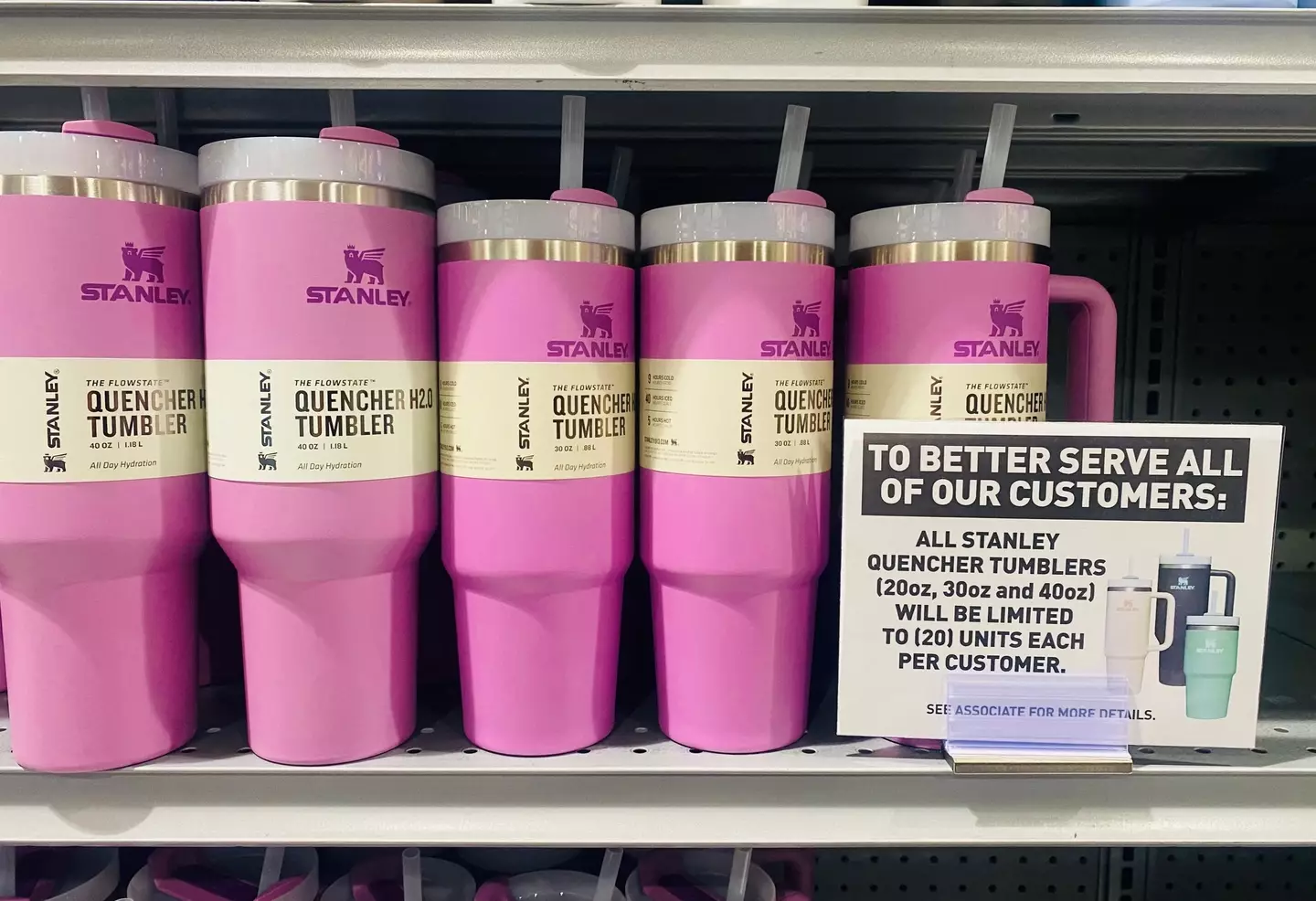
Stanley have responded to viral videos claiming that there are elements of lead in their popular cups.
If you've not spotted Stanley cups on shop shelves they're stainless steel water bottles which have become really rather popular all over the place.
However, just as the cups themselves have gone viral so too have health concerns over their cups containing the highly poisonous metal lead.
Advert
There have been a number of videos doing the rounds on social media where people tested their cups for lead with varying results.
Some of the test videos found nothing, while others said they detected lead in the bottom of the popular cups.
This has led to claims that drinking from Stanley cups could pose a health risk, though none making claims have alleged illness as a result, and the company have now issued a response.

In a statement provided to NBC News, Stanley said they did use lead in their manufacturing process but that you'd have to damage their products to expose it.
Advert
Their spokesperson said that on the bottom of their cups there was a circular barrier of stainless steel which covered a pellet of lead.
That lead seals the vacuum insulation on the cup and can't be accessed unless the steel barrier is removed, which is 'rare' but not impossible.
Stanley said their products were in line with all regulatory requirements, and that they are 'making progress on innovative, alternative materials for use in the sealing process'.
So yes, Stanley cups do contain lead but it's supposed to be sealed behind steel and shouldn't be exposed unless the cup gets damaged and many insulated water bottles contain lead for the exact same purpose to seal the vacuum layer so switching to another brand is unlikely to sort it.
Advert
Essentially the lead should not come into contact with whatever drink you've deposited in your cup, so there's very little chance of being exposed to lead from drinking from one of them.

Exposure to lead is particularly harmful for babies and young children, though of course it's absolutely not recommended for adults either.
According to the NHS, noticeable symptoms of lead poisoning in young children include fatigue, loss of appetite, abdominal pain, vomiting, constipation, hearing loss and potentially even developmental difficulties.
Advert
For adults the abdominal pain, constipation and fatigue are all still there as symptoms, and you may also experience high blood pressure, joint and muscle pain, a numbness or tingling in your extremities, headaches or memory loss.
Lead poisoning can also increase the risk of miscarriage or premature birth in pregnant women.
The most common cause of lead poisoning is drinking tap water from houses with lead pipes, with there being a chance that houses built before 1970 have lead pipes in their plumbing.
LADbible has contacted Stanley for further comment.
Featured Image Credit: Stanley/Justin Sullivan/Getty Images